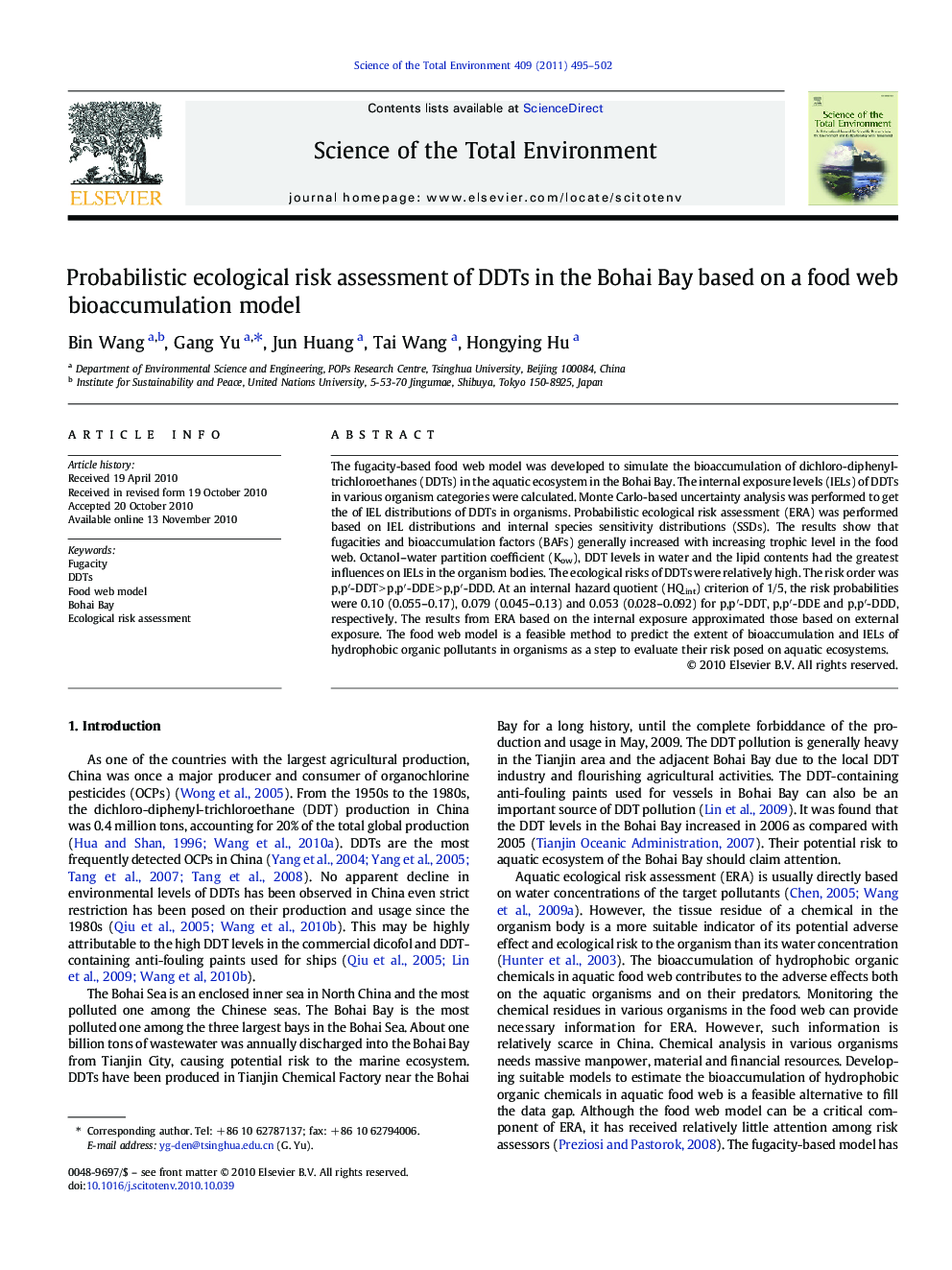| Article ID | Journal | Published Year | Pages | File Type |
|---|---|---|---|---|
| 4430083 | Science of The Total Environment | 2011 | 8 Pages |
The fugacity-based food web model was developed to simulate the bioaccumulation of dichloro-diphenyl-trichloroethanes (DDTs) in the aquatic ecosystem in the Bohai Bay. The internal exposure levels (IELs) of DDTs in various organism categories were calculated. Monte Carlo-based uncertainty analysis was performed to get the of IEL distributions of DDTs in organisms. Probabilistic ecological risk assessment (ERA) was performed based on IEL distributions and internal species sensitivity distributions (SSDs). The results show that fugacities and bioaccumulation factors (BAFs) generally increased with increasing trophic level in the food web. Octanol–water partition coefficient (Kow), DDT levels in water and the lipid contents had the greatest influences on IELs in the organism bodies. The ecological risks of DDTs were relatively high. The risk order was p,p′-DDT > p,p′-DDE > p,p′-DDD. At an internal hazard quotient (HQint) criterion of 1/5, the risk probabilities were 0.10 (0.055–0.17), 0.079 (0.045–0.13) and 0.053 (0.028–0.092) for p,p′-DDT, p,p′-DDE and p,p′-DDD, respectively. The results from ERA based on the internal exposure approximated those based on external exposure. The food web model is a feasible method to predict the extent of bioaccumulation and IELs of hydrophobic organic pollutants in organisms as a step to evaluate their risk posed on aquatic ecosystems.
Research Highlights► Fugacities and BAFs of DDTs generally increased with increasing trophic levels. ► Kow and Cw most influenced the internal exposure levels in the organism bodies. ► In the Bohai Bay, the risk order of DDTs was p,p′-DDT > p,p′-DDE > p,p′-DDD. ► ERA results based on the internal and external exposure coincided with each other. ► The food web model contributes to the ERA of aquatic pollutants.
